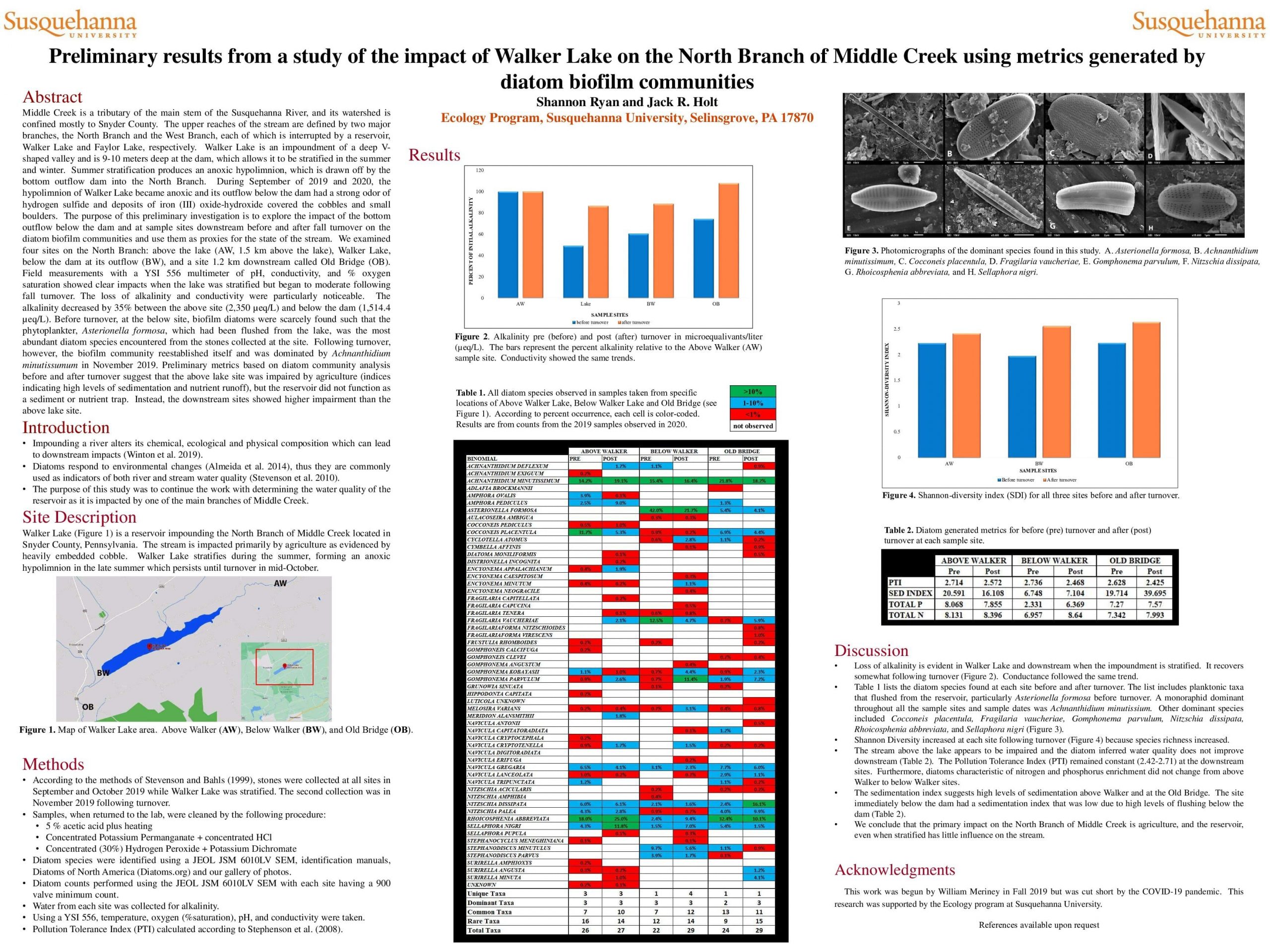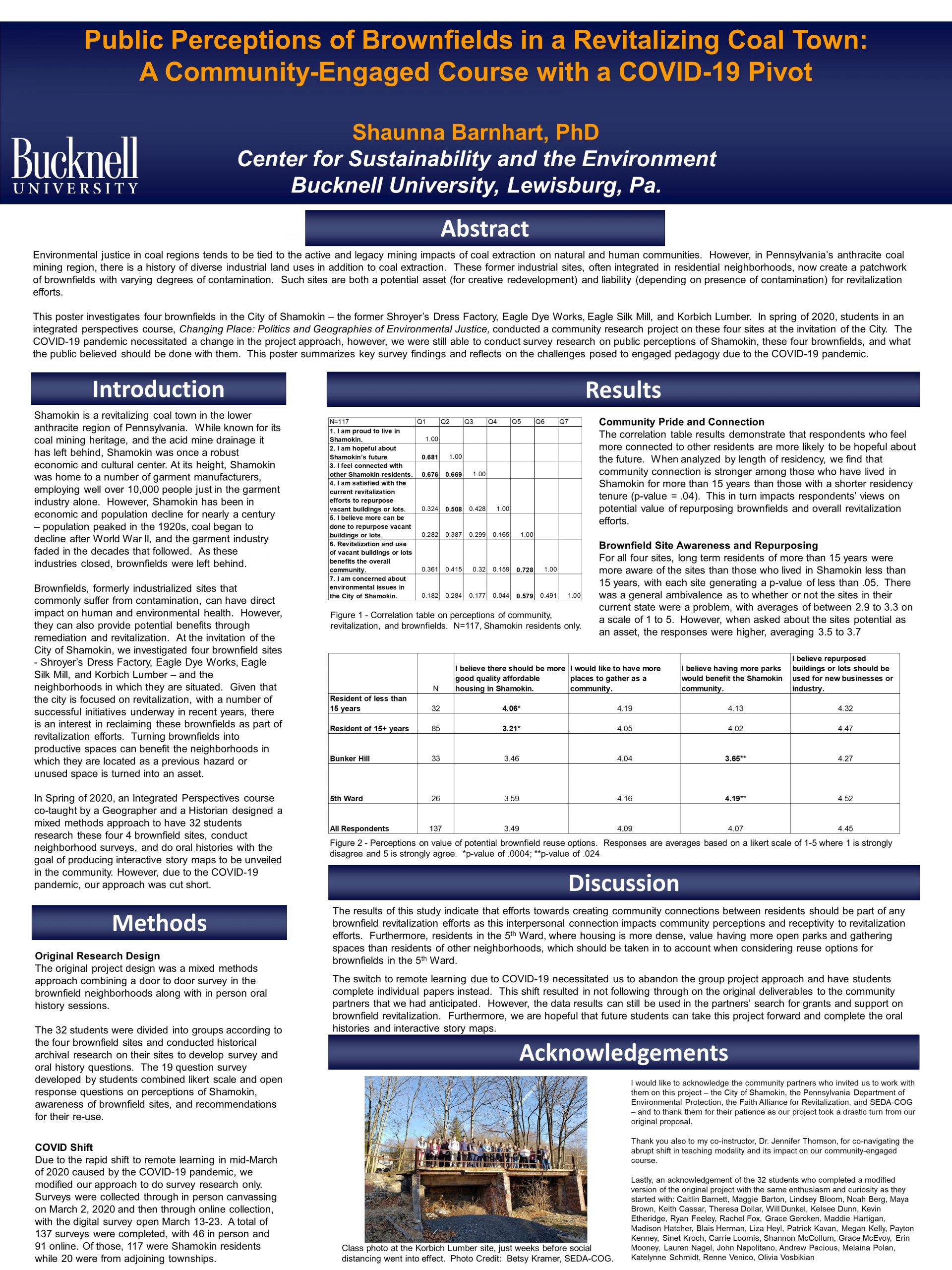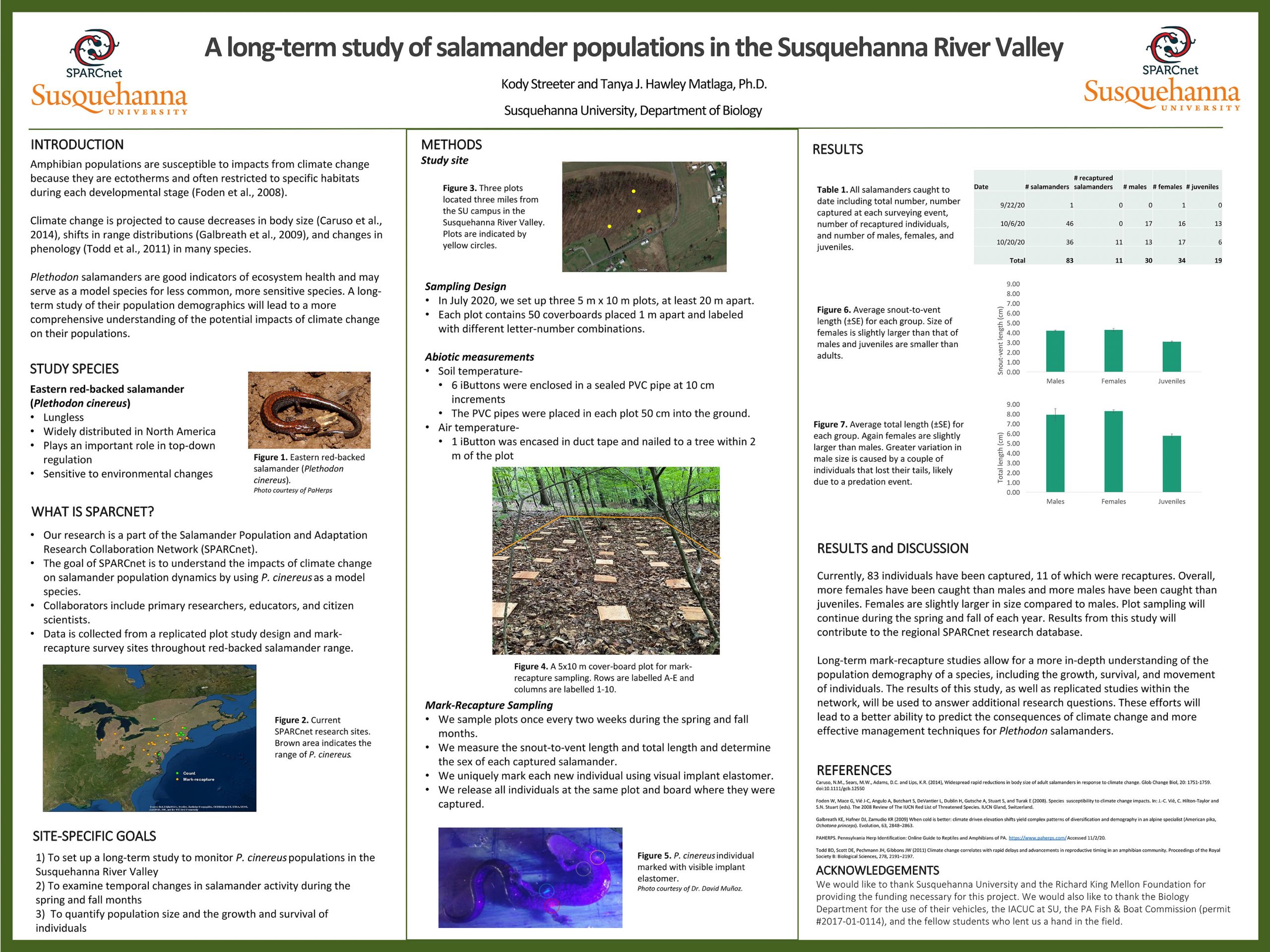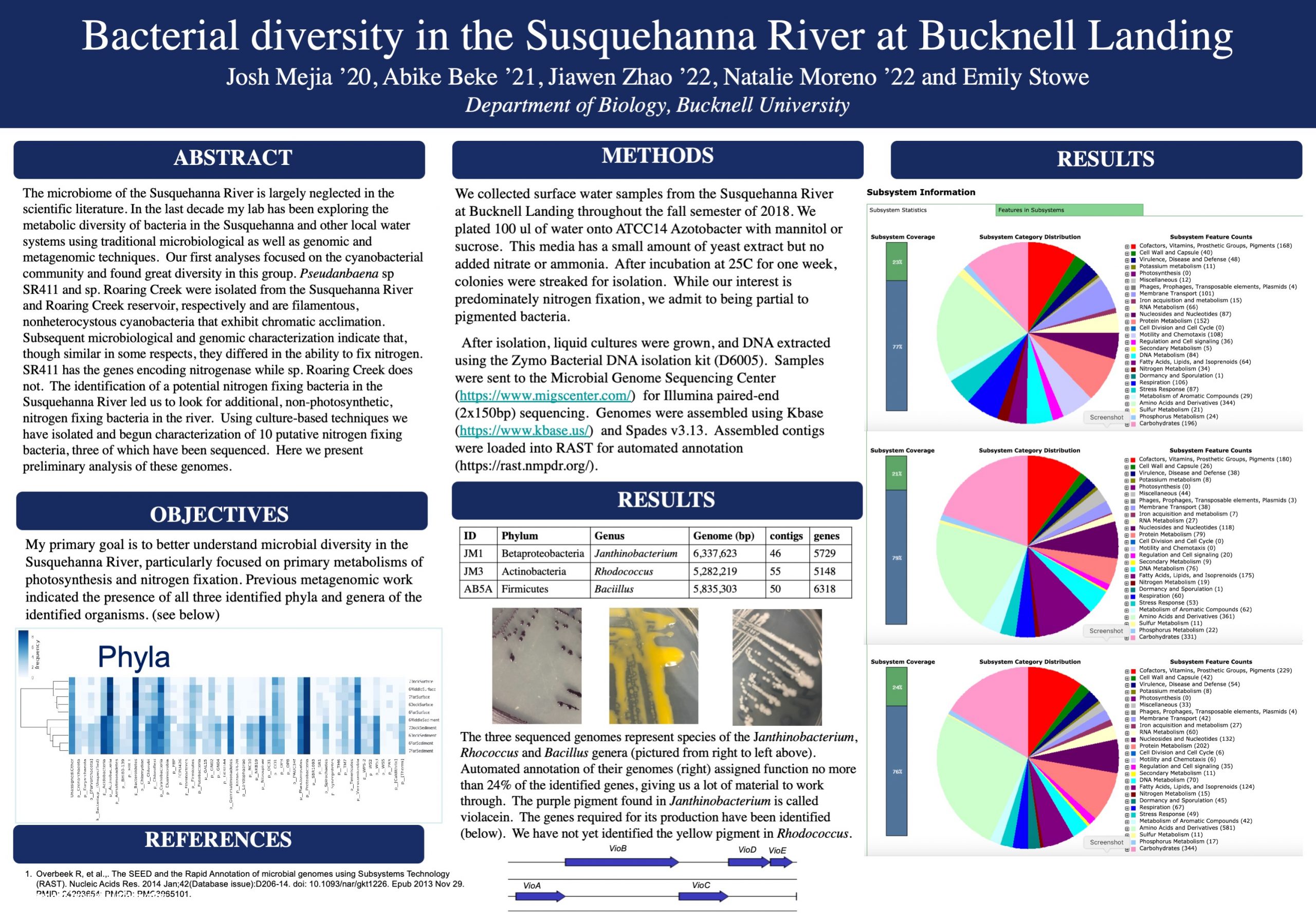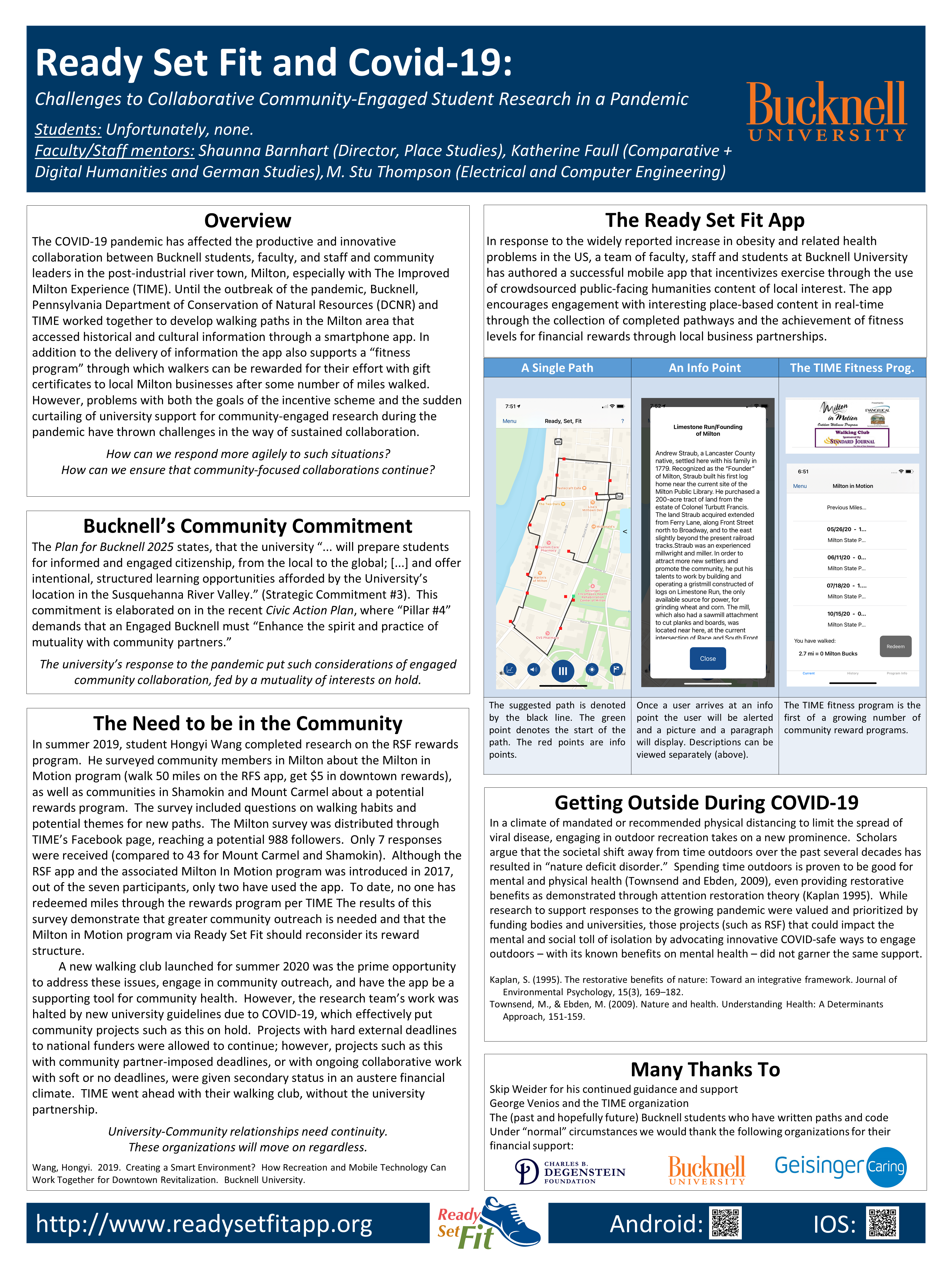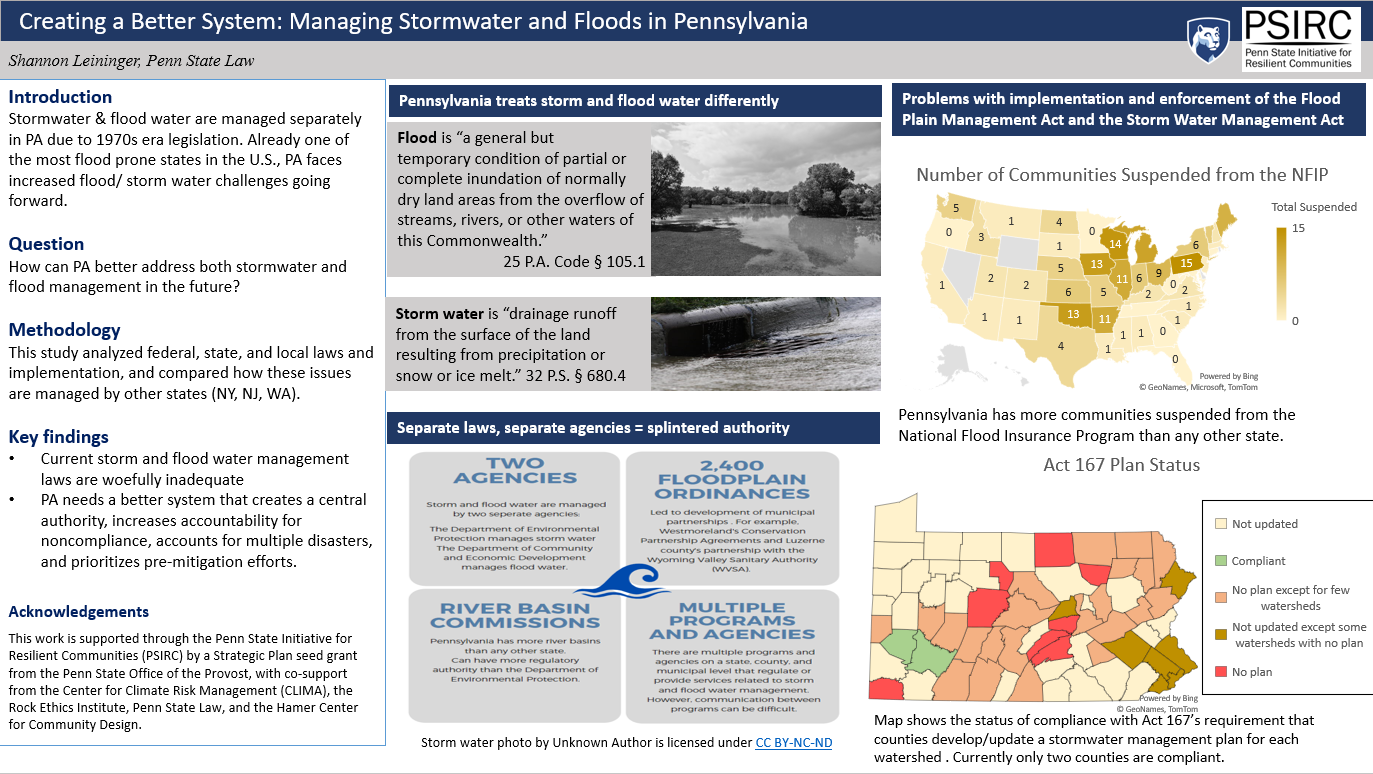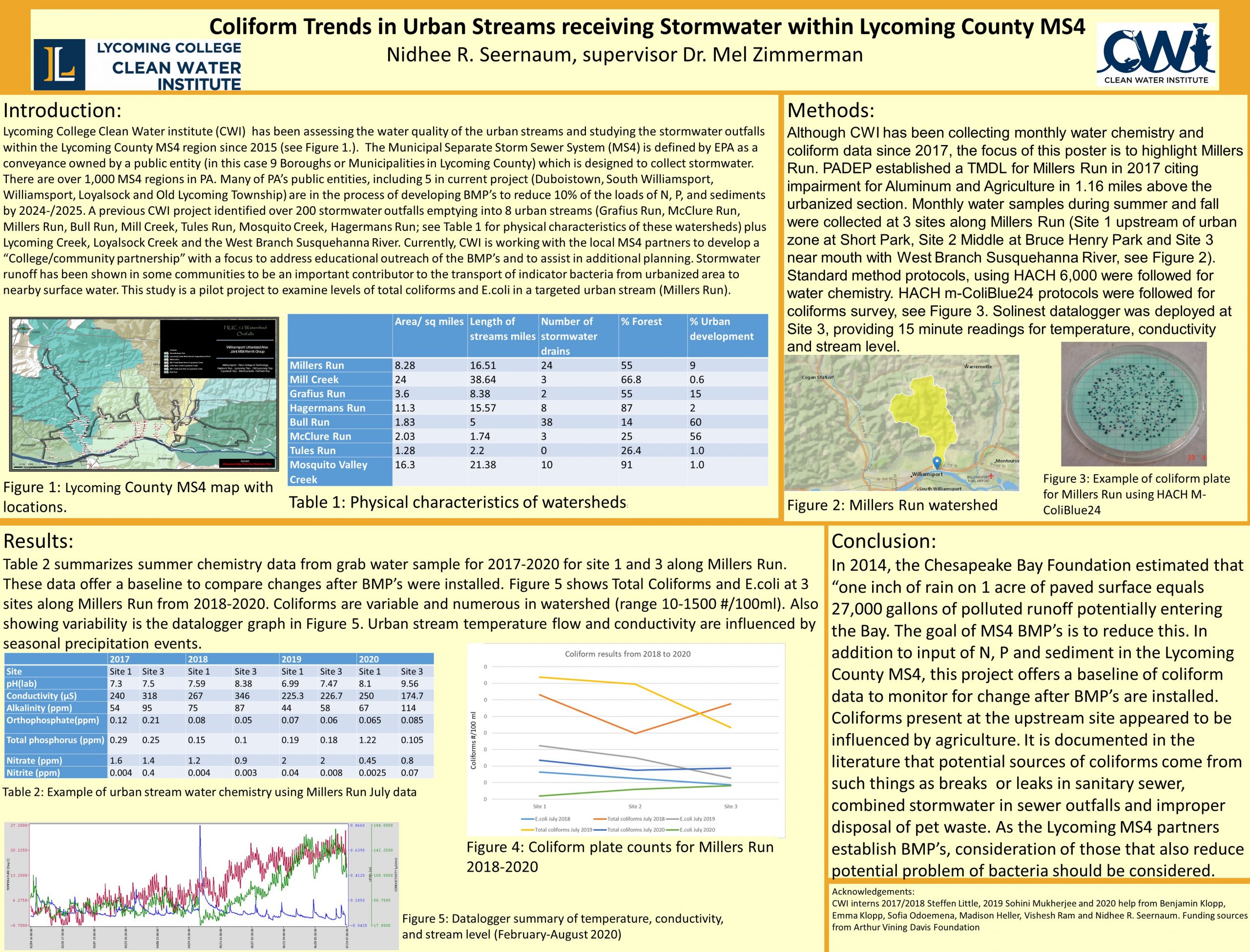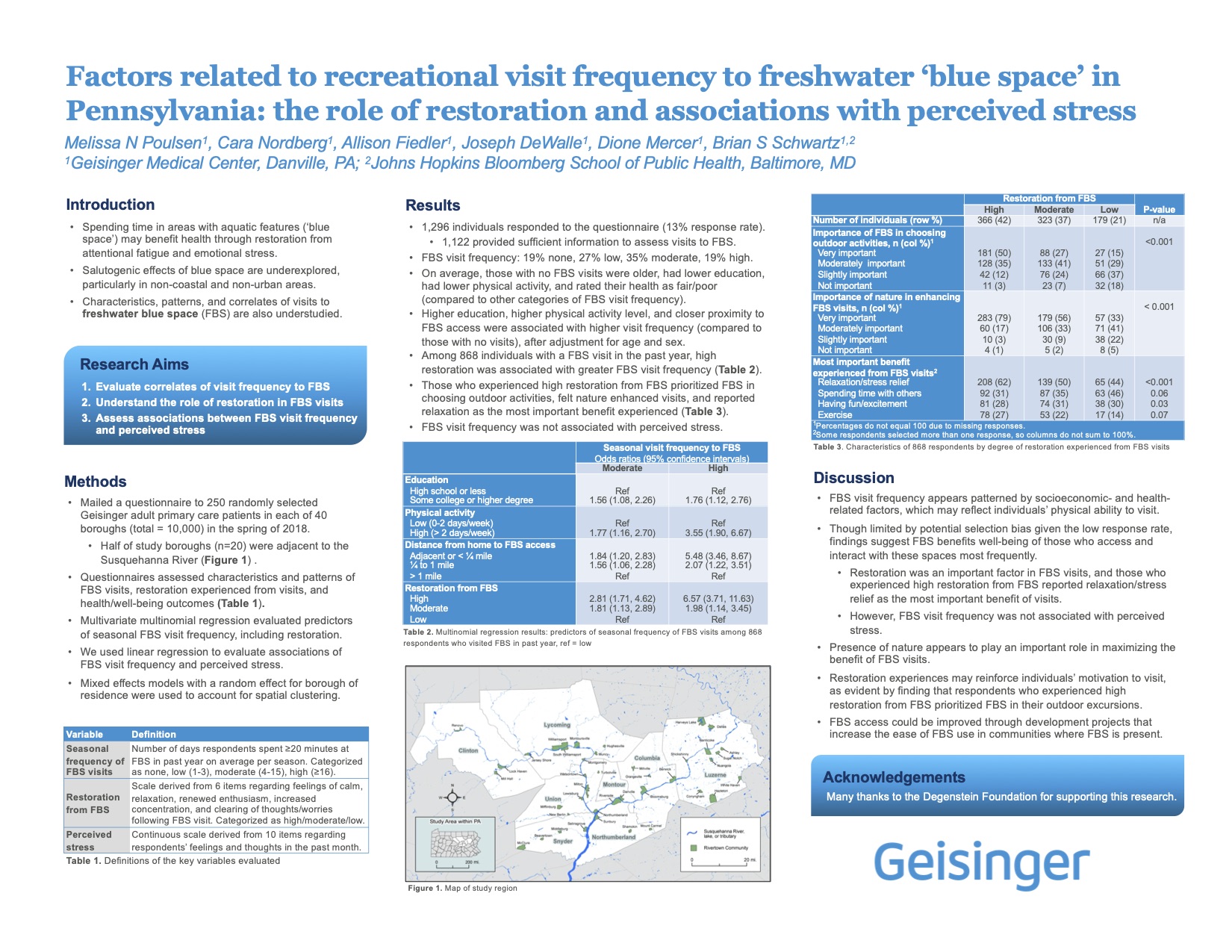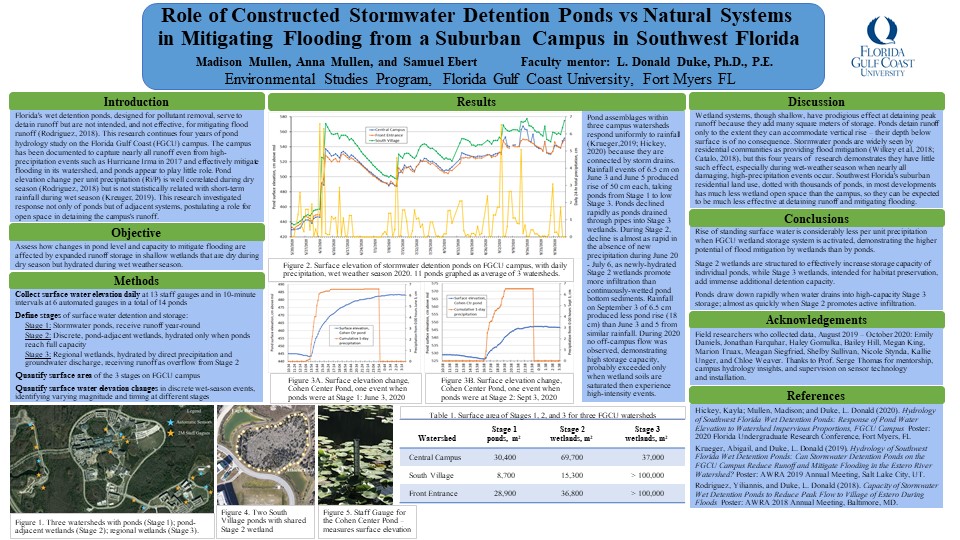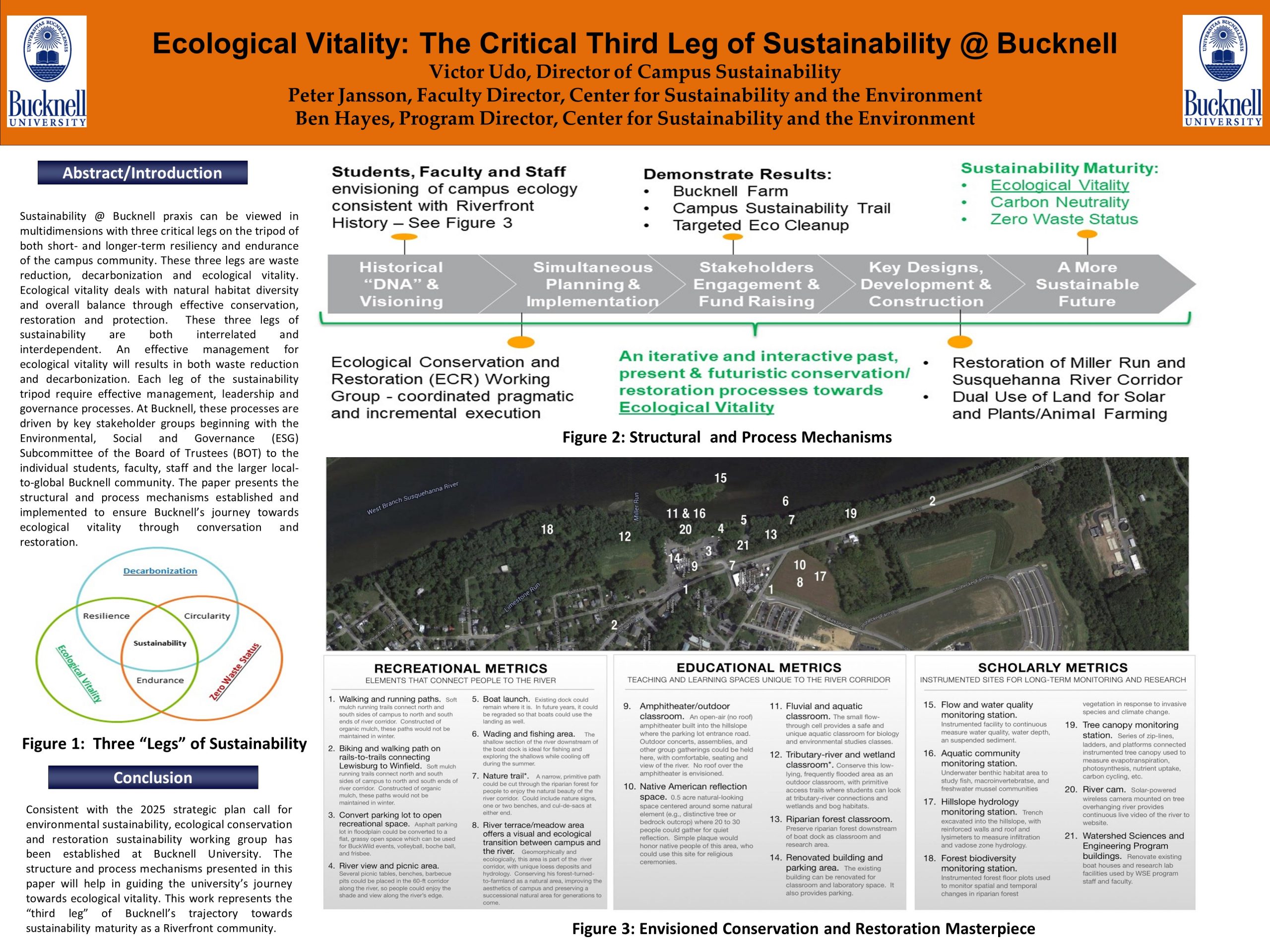Preliminary results from a study of the impact of Walker Lake on the North Branch of Middle Creek using metrics generated by diatom biofilm communities
Middle Creek is a tributary of the main stem of the Susquehanna River, and its watershed is confined mostly to Snyder County. The upper reaches of the stream are defined by two major branches, the North Branch and the West Branch, each of which is interrupted by a reservoir, Walker Lake and Faylor Lake, respectively. Walker Lake is an impoundment of a deep V-shaped valley and is 9-10 meters deep at the dam, which allows it to be stratified in the summer and winter. Summer stratification produces an anoxic hypolimnion, which is drawn off by the bottom outflow dam into the North Branch. During September of 2019 and 2020, the hypolimnion of Walker Lake became anoxic and its outflow below the dam had a strong odor of hydrogen sulfide and deposits of iron (III) oxide-hydroxide covered the cobbles and small boulders. The purpose of this preliminary investigation is to explore the impact of the bottom outflow below the dam and at sample sites downstream before and after fall turnover on the diatom biofilm communities and use them as proxies for the state of the stream. We examined four sites on the North Branch: above the lake (1.5 km above the lake), Walker Lake, below the dam at its outflow, and a site 1.2 km downstream called Old Bridge. Field measurements with a YSI 556 multimeter of pH, conductivity, and % oxygen saturation showed clear impacts when the lake was stratified but began to moderate following fall turnover. The loss of alkalinity and conductivity were particularly noticeable. The alkalinity decreased by 35% between the above site (2,350 µeq/L) and below the dam (1,514.4 µeq). Before turnover, at the below site, biofilm diatoms were scarcely found such that the phytoplankter, Asterionella formosa, which had been flushed from the lake, was the most abundant diatom species encountered from the stones collected at the site. Following turnover, however, the biofilm community reestablished itself and was dominated by Achnanthidium minutissumum in November 2019. Preliminary metrics based on diatom community analysis before and after turnover suggest that the above lake site was impaired by agriculture (indices indicating high levels of sedimentation and nutrient runoff), but the reservoir did not function as a sediment or nutrient trap. Instead, the downstream sites showed higher impairment than the above lake site.
